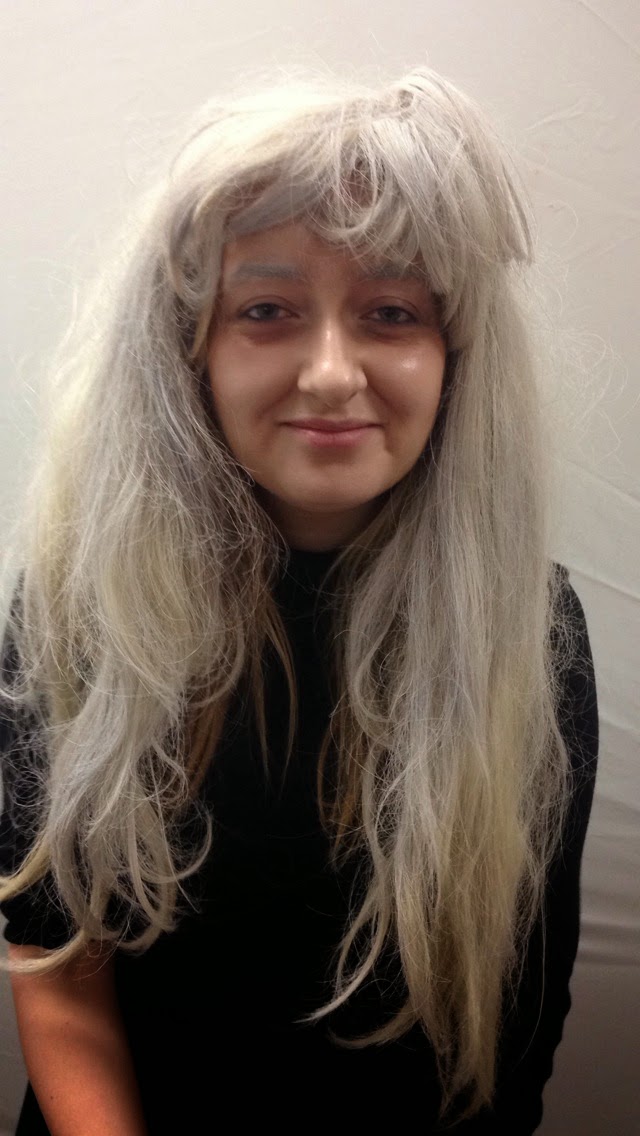Gothic horror can be seen in lots of different ways, the
actual definition found on google states that ‘Gothic fiction (sometimes
referred to as Gothic horror) is a genre of literature that combines elements
of both horror and romance. As a genre, it is generally believed to have been
invented by the English author Horace Walpole, with his 1764 novel The Castle
of Otranto. The effect of Gothic fiction feeds on a pleasing sort of terror, an
extension of Romantic literary pleasures that were relatively new at the time
of Walpole's novel. Melodrama and parody (including self-parody) were other
long-standing features of the Gothic initiated by Walpole.’
When learning about Gothic Horror in class we found that it
has different elements to it; it is a mix of Gothic and Romance, including
Gothic architecture. It can include things like torture and rituals, some words
that were found to be linked to this genre were ‘corrupting, mutating and
decaying.’
There are lots of different elements to the gothic genre,
some of the key motifs are things like sexual power, the uncanny, the sumblime,
crisis and the supernatural and the real. It also includes:
Strange places: In a gothic novel the characters often find
themselves in strange and scary places, somewhere unknown.
Clashing time periods: Gothic novels often take place in
times of transition, for example between the medieval period and the
Renaissance.
Power and Constraints: Its stories are full of constraint, trapped
and forced actions. Scenes of extreme threat and isolation either physical or
psychological are always happening or about to happen in these novels.
Terror versus Horror: Terror can be said to be morally
uplifting, it doesn’t show horrifying things just simply suggests them. Horror
on the other hand shows things explicitly.
A world of doubt: gothic being a word of doubt, not knowing
what exactly is going to happen in a scene, but that possibility is accompanied
by uncertainty.
http://www.bl.uk/romantics-and-victorians/articles/gothic-motifs
In Great expectations Satis house if the perfect setting,
having a gloom atmosphere of decay and ghostliness, highlighting the lifestyle
of Miss Havisham. Miss Havisham herself being bizarre, hovering on the
borderline between sanity and madness. In the novel Great Expectations not only
does Miss Havisham resemble the dead but Magwitch could as well. Miss Havisham
is seen as a mother figure, at the end of the novel she realises the damage she
had done hurting pip and seeks forgiveness; being consumed by the fire (a Christian
was of cleansing as well as punishment) and the reader forgives her for what
she’s done to pip as we feel sorry for her.
Image link:
https://www.google.co.uk/search?q=great+expectations+satis+house&espv=2&biw=1517&bih=741&source=lnms&tbm=isch&sa=X&ei=QovPVKi8OcyxafO_goAF&ved=0CAYQ_AUoAQ&dpr=0.9#imgdii=_&imgrc=re7yHmJm2RTlgM%253A%3Bh4S-Jqdc-GNnnM%3Bhttp%253A%252F%252Fi.dailymail.co.uk%252Fi%252Fpix%252F2011%252F11%252F22%252Farticle-0-0EE5E74500000578-342_634x434.jpg%3Bhttp%253A%252F%252Fwww.dailymail.co.uk%252Ftvshowbiz%252Farticle-2064629%252FGREAT-Expectations-Gillian-Anderson-leads-star-cast-BBCs-festive-adaptation-Charles-Dickens-classic.html%3B634%3B434











